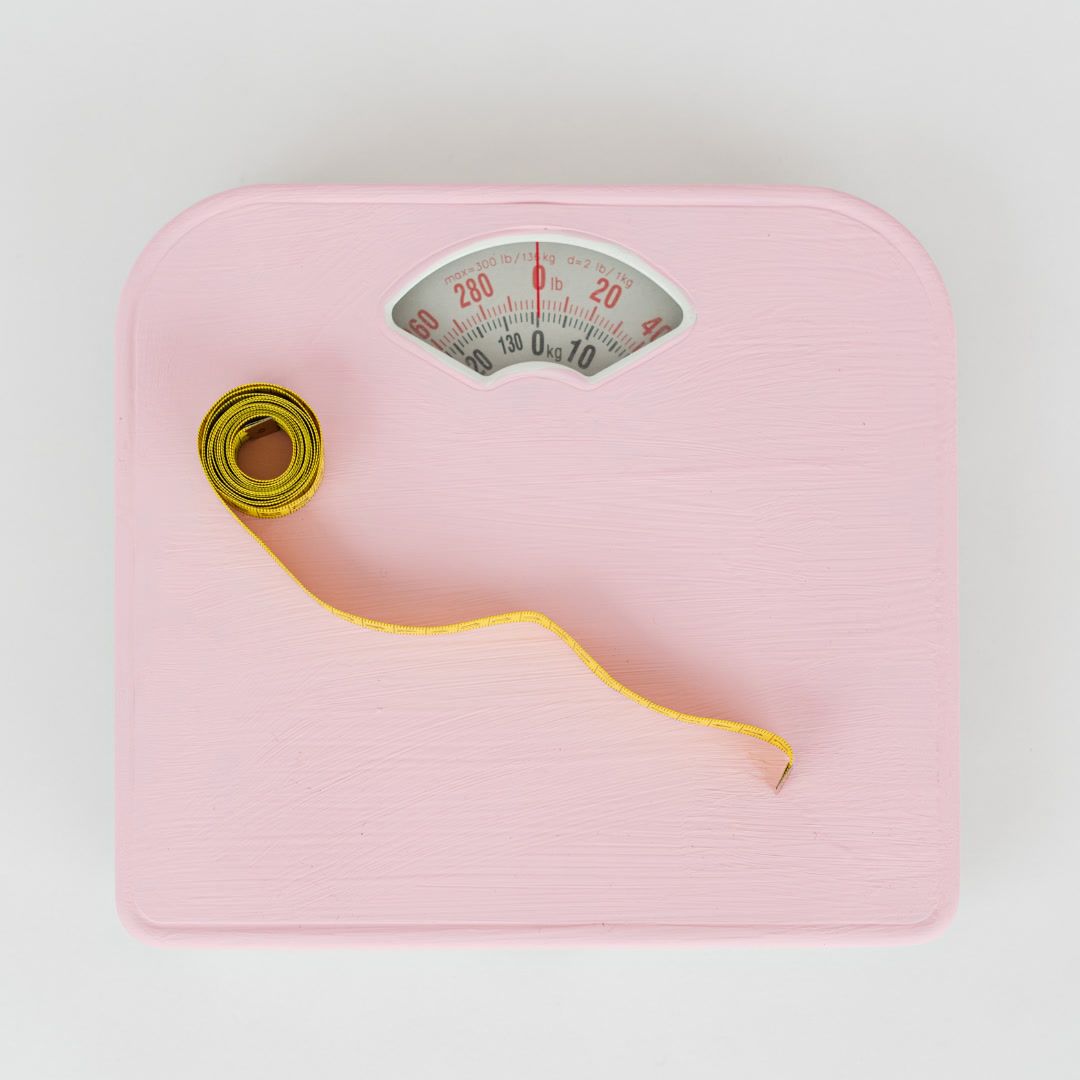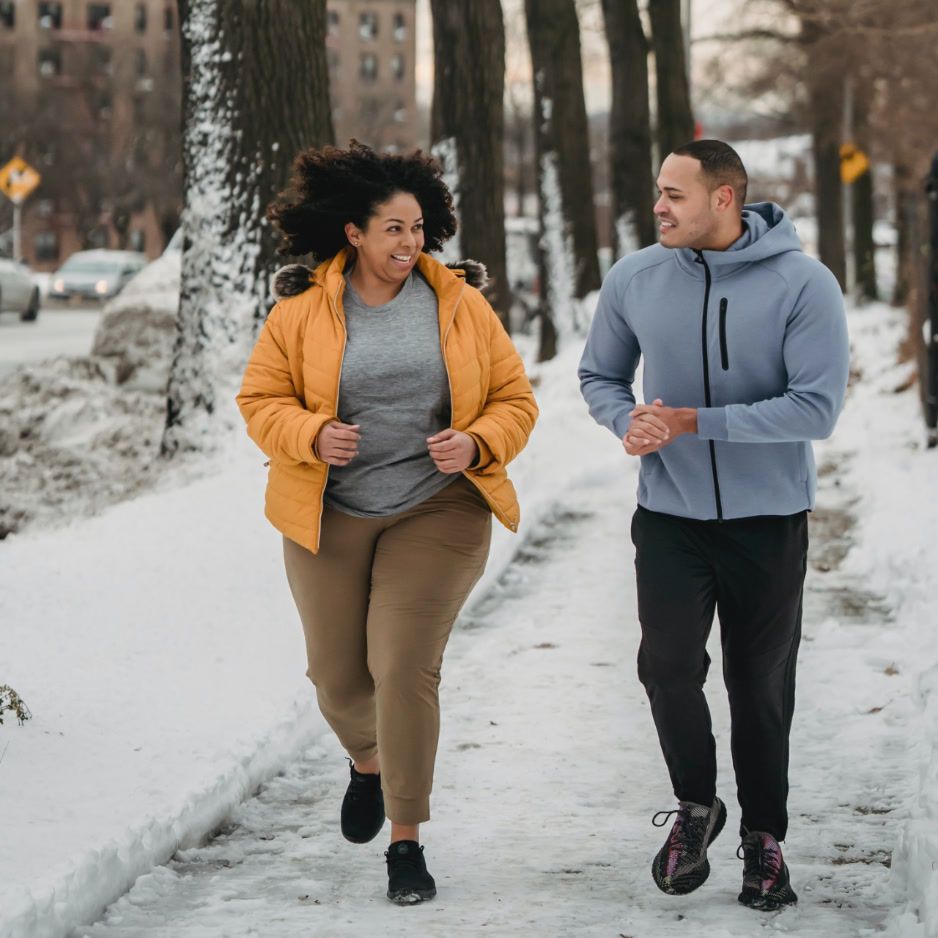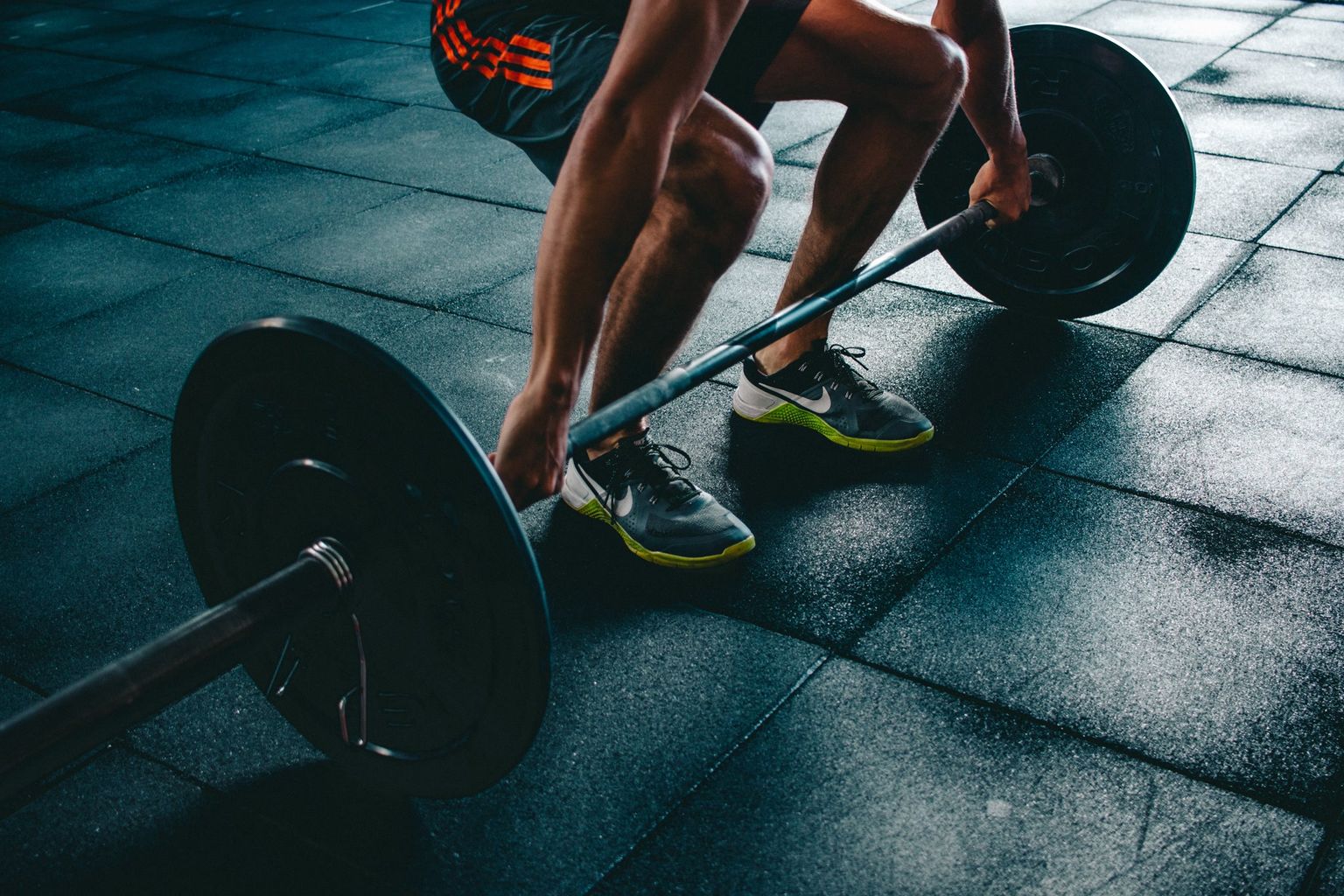All Major Muscle Groups: Anatomy and Training Guide
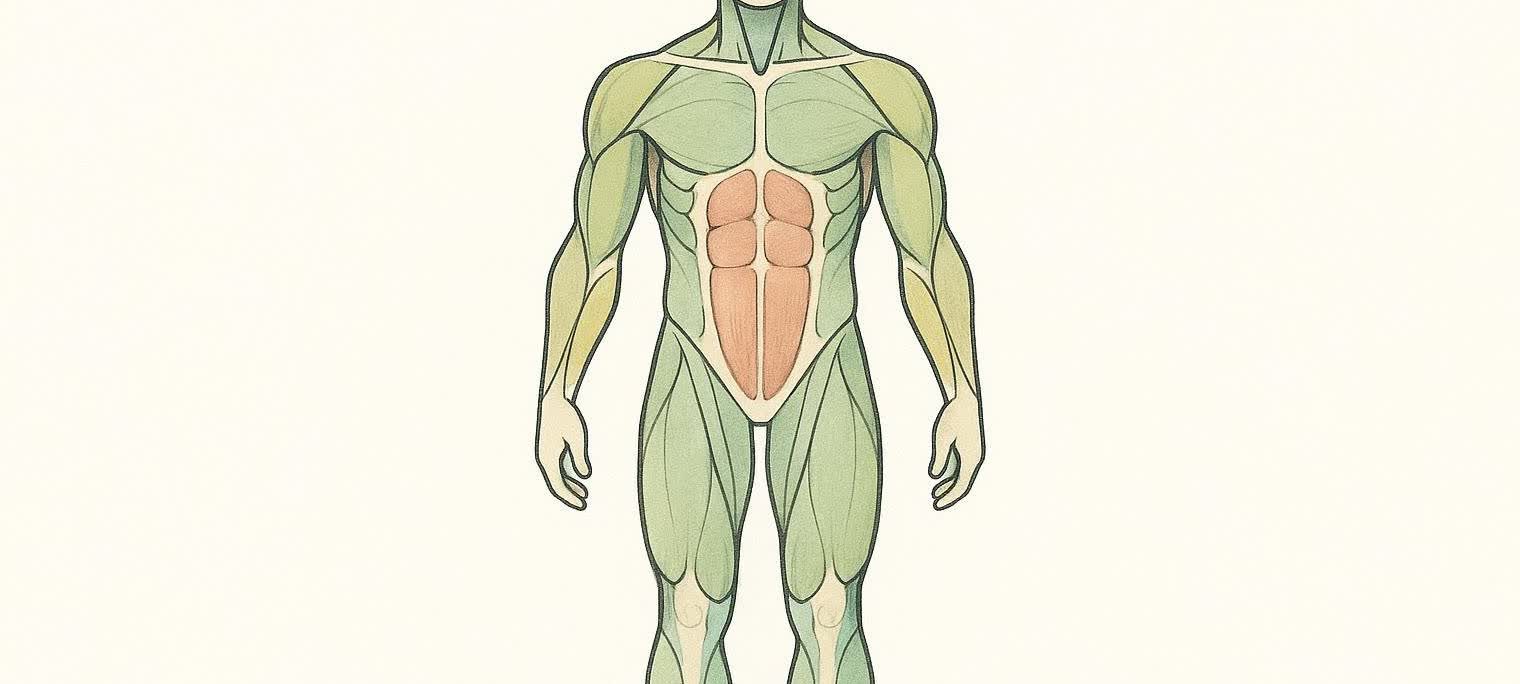
All Major Muscle Groups: Anatomy & Training Guide
Quick glance: The human body contains more than 650 named skeletal muscles (Cleveland Clinic). While fitness texts sometimes group muscles into as few as six or as many as fourteen categories, focusing on 12 major muscle groups offers a comprehensive yet manageable framework for covering nearly every movement pattern you’ll use in sport, life, and the gym.
Why Focus on “Major” Muscle Groups?
- Efficiency – Targeting major muscle groups simplifies workout design and prevents overly complex routines.
- Balance – Neglecting a group can create strength and posture imbalances.
- Progress Tracking – BodySpec DEXA scans break lean mass into regional segments (arms, legs, trunk). Training by major group aligns perfectly with these data slices.
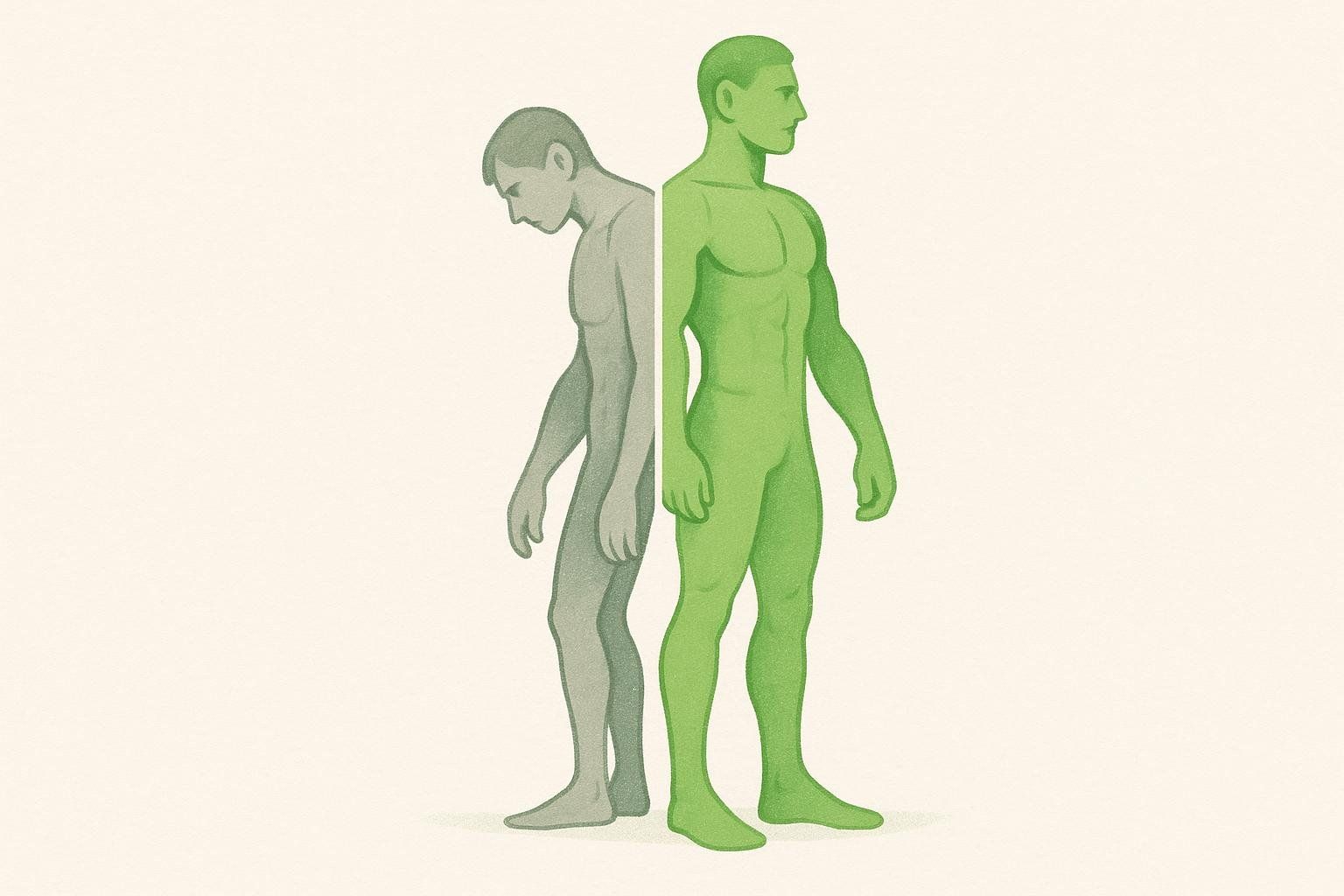
The 12 Major Muscle Groups
Below is a quick-reference table. Detailed breakdowns follow with training insights and practical tips.
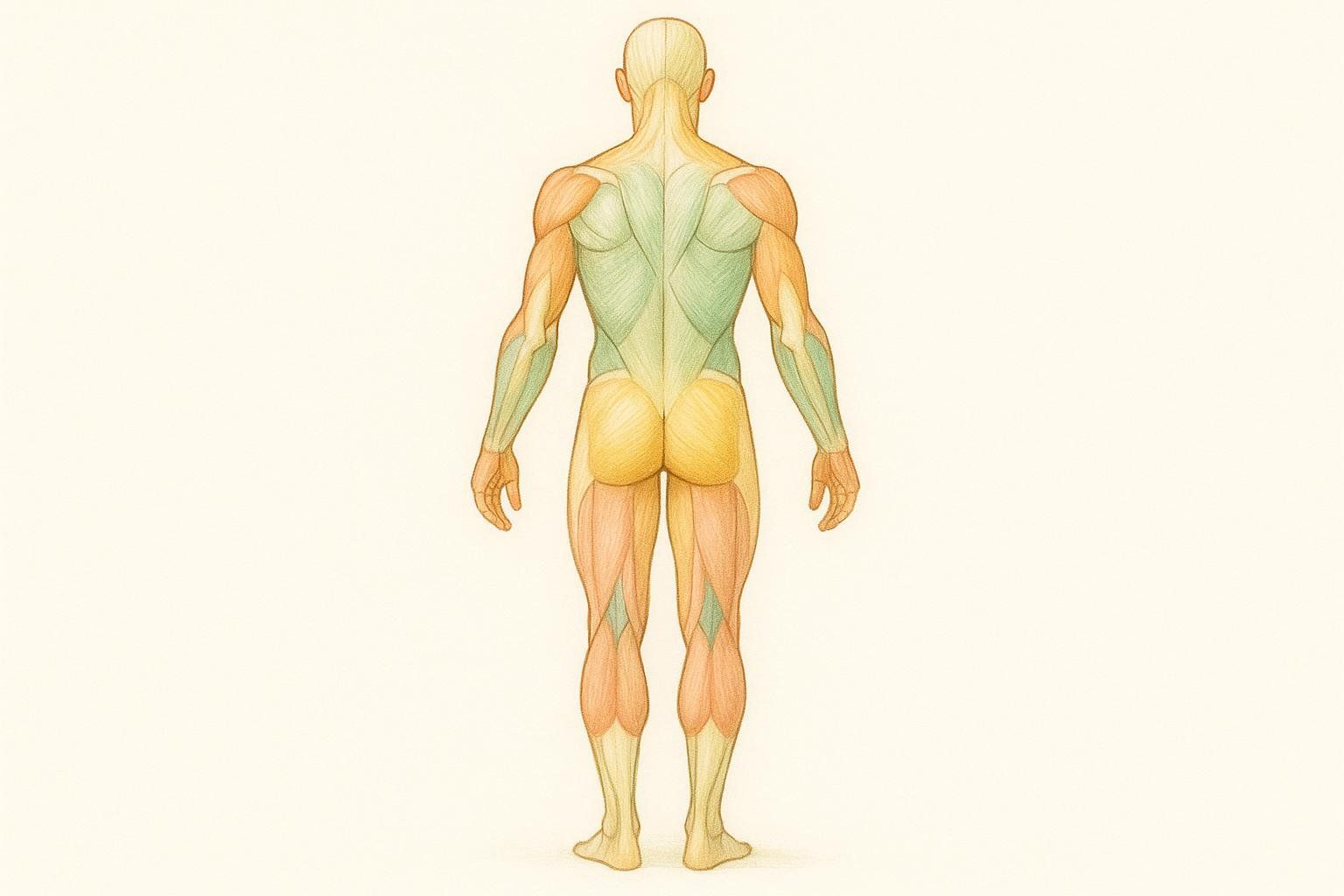
| # | Muscle Group | Primary Location | Everyday Function | Example Exercises |
|---|---|---|---|---|
| 1 | Chest (Pectorals) | Front upper torso | Pushing, hugging | Push-up, Bench Press |
| 2 | Upper Back (Traps & Rhomboids) | Upper back/shoulder blades | Posture, positioning shoulders | Face Pull, Shrug |
| 3 | Mid-Back (Lats) | Side & mid back | Pulling, climbing | Pull-up, Row |
| 4 | Lower Back (Erector Spinae) | Along spine | Keeping torso upright | Good-morning, Back Extension |
| 5 | Shoulders (Deltoids) | Around shoulder joint | Lifting arms | Overhead Press, Lateral Raise |
| 6 | Biceps | Front upper arm | Bending the elbow | Curl variations |
| 7 | Triceps | Back upper arm | Straightening the elbow | Dips, Tricep Push-down |
| 8 | Core (Abs & Obliques) | Front & side torso | Stabilizing the spine | Plank, Dead-bug |
| 9 | Glutes | Buttocks | Driving hips forward | Hip Thrust, Squat |
| 10 | Quadriceps | Front thigh | Straightening the knee | Squat, Lunge |
| 11 | Hamstrings | Back thigh | Bending the knee | Romanian Deadlift, Leg Curl |
| 12 | Calves (Gastrocnemius & Soleus) | Back lower leg | Pointing toes down, jumping | Calf Raise, Jump Rope |
Muscle Group Breakdowns & Pro Tips
Chest (Pectorals): The pectoralis complex drives horizontal pressing and shoulder flexion. For balanced development, adjust bench angles (incline, flat, decline) to shift emphasis across upper and lower fibers.
Upper Back (Traps & Rhomboids): These scapular stabilizers counteract screen-time slouching. A 2022 study found that elastic band pull-aparts significantly activate middle and lower trapezius fibers, enhancing posture (Fukunaga & Fedge 2022).
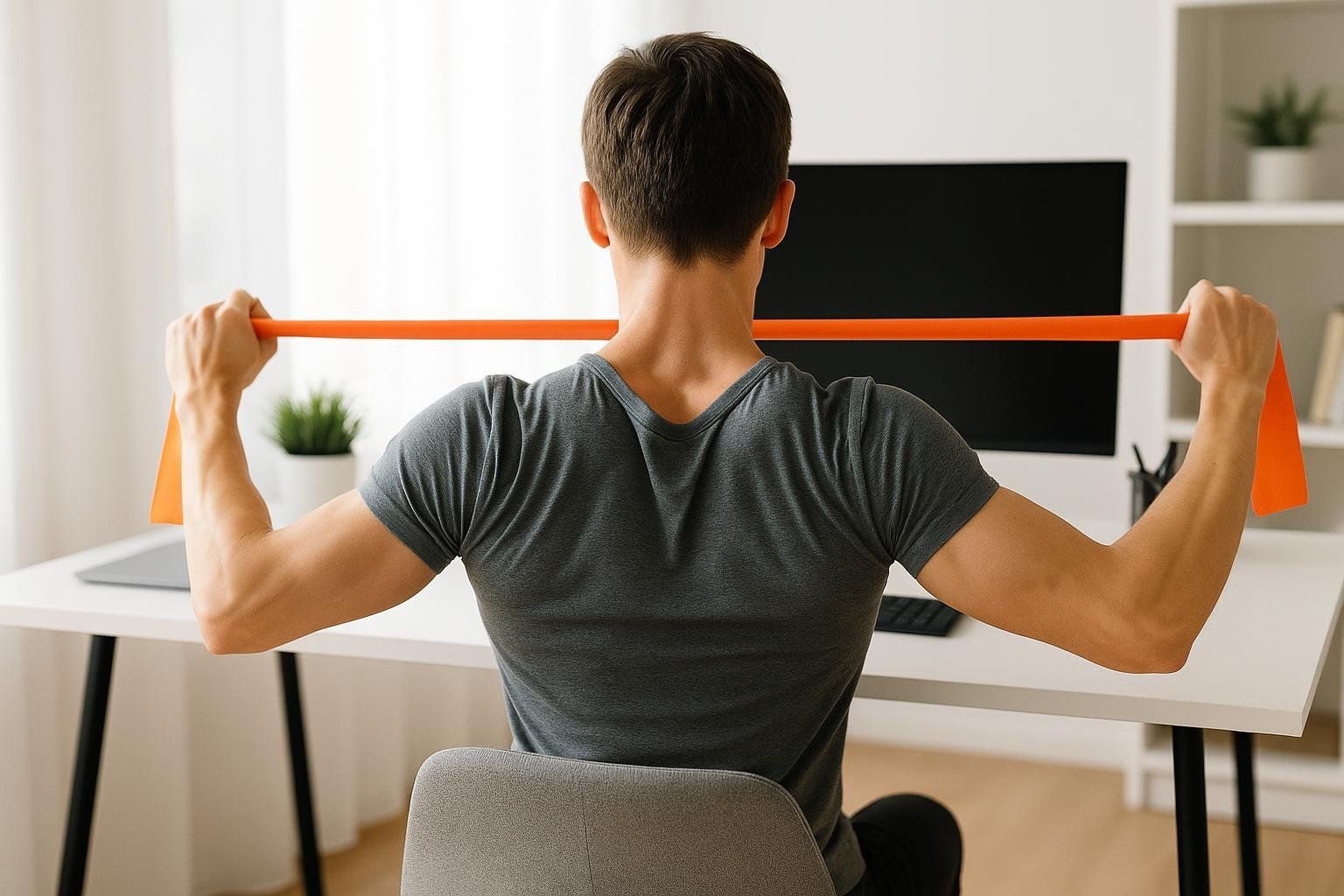
Mid-Back (Lats): The latissimus dorsi—often called the lats—are broad, wing-shaped muscles that create the coveted V-taper. To maximize lat engagement, keep elbows close to your torso during pulling movements.
Lower Back (Erector Spinae): Acting like the body’s natural weight belt, the erectors resist spinal flexion. Maintaining a neutral spine throughout hinge patterns protects lumbar discs while allowing the muscles to strengthen safely.
Shoulders (Deltoids): Comprising three heads—anterior, lateral, and posterior—the deltoids move the arm in nearly every direction. Varying arm paths (front raises vs. lateral raises) ensures all three heads receive adequate stimulus.
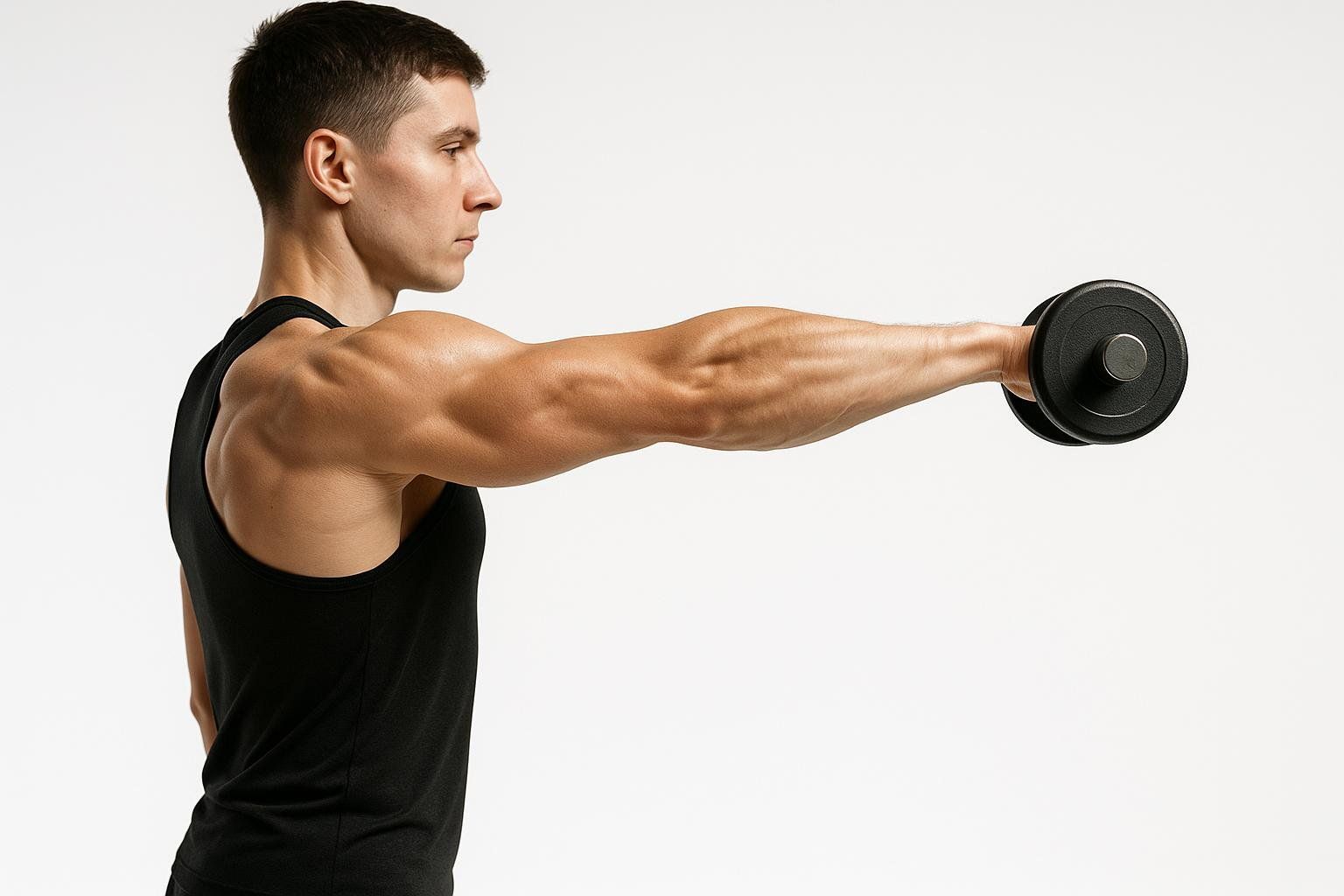
Biceps: Beyond elbow flexion, the biceps assist with forearm supination. Rotating your palms upward at the top of each curl increases mechanical tension on the long head.
Triceps: Responsible for roughly two-thirds of upper-arm mass, the triceps include a long head that crosses the shoulder. Incorporating overhead extensions places this head under maximal stretch for greater hypertrophy.
Core (Abs & Obliques): Your core transfers force between the upper and lower body. Anti-rotation drills like the Pallof press build stability that translates to safer heavy lifts.
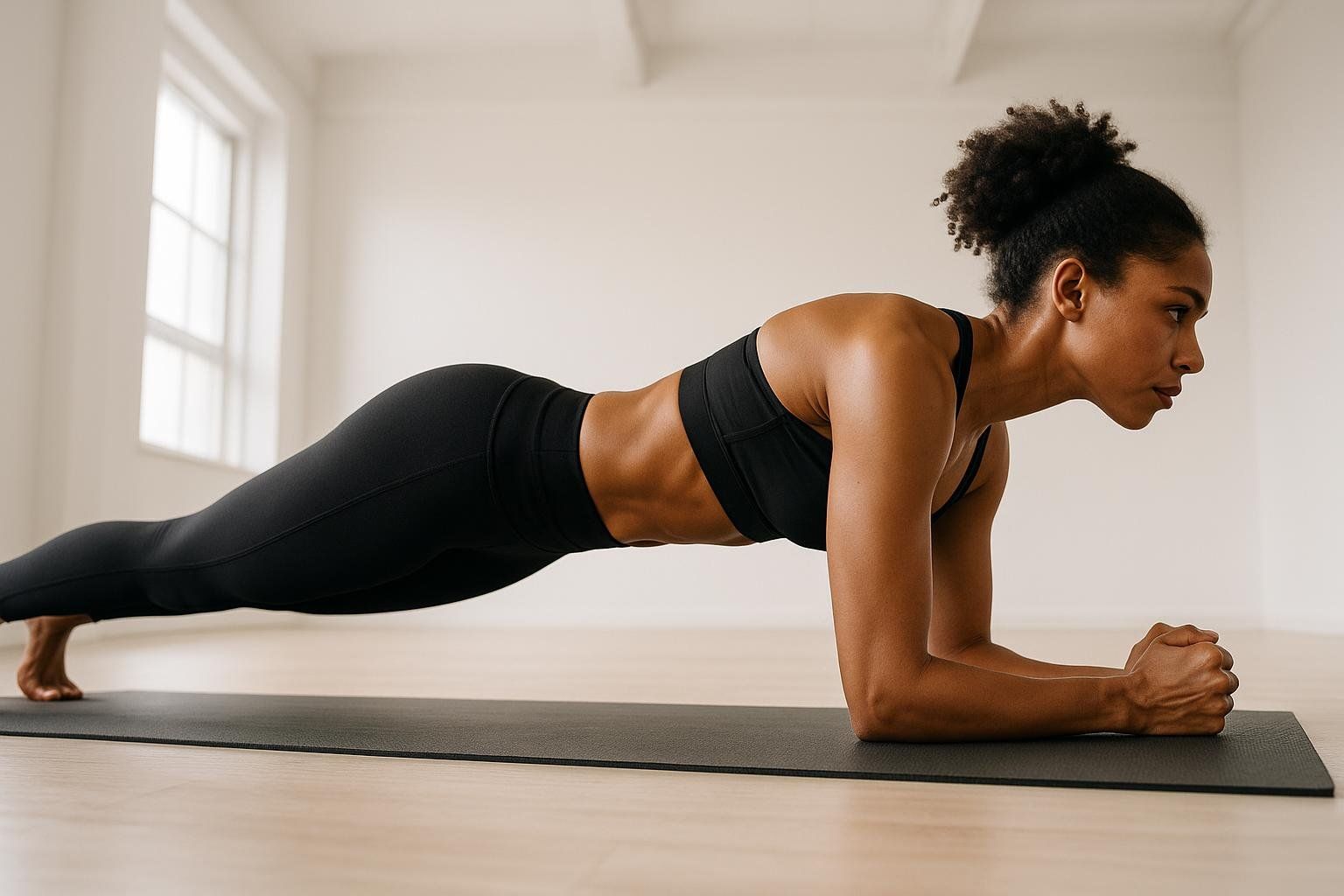
Glutes: As the body’s powerhouse, strong glutes improve sprint speed and reduce knee valgus. Pausing for two seconds at the top of hip thrusts increases time under tension for better activation.
Quadriceps: The four-muscle quad group controls knee extension and deceleration when landing. Evidence suggests that squatting to at least parallel depth recruits more vastus medialis fibers, supporting healthy patellar tracking (Ng et al. 2015).
Hamstrings: These bi-articular muscles extend the hip and flex the knee. A meta-analysis by Cai et al. (2023) found that progressive static stretching boosts long-term hamstring flexibility without compromising strength (Cai et al. 2023).
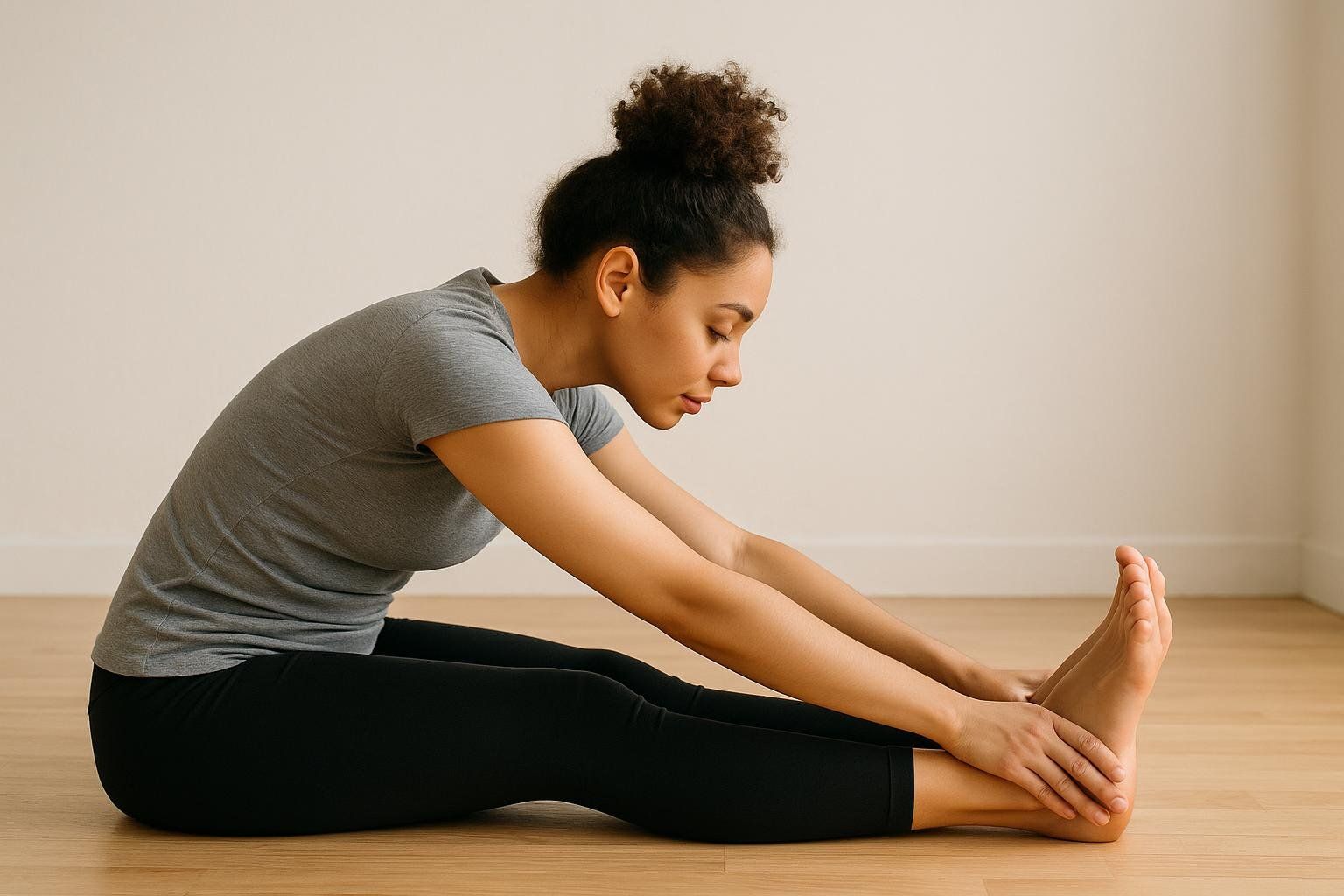
Calves (Gastrocnemius & Soleus): Training with both straight-leg (gastrocnemius-dominant) and bent-leg (soleus-dominant) variations ensures complete lower-leg development. Aim for slow eccentrics to stimulate stubborn calf fibers.
How to Organize Workouts Around These Groups
| Split Style | Days per Cycle | Sample Emphasis | Best For |
|---|---|---|---|
| Full Body | 3 (Mon / Wed / Fri) | All 12 groups each session | Beginners; busy schedules |
| Upper & Lower | 4 (Mon / Tue / Thu / Fri) | Upper: chest, upper back, shoulders, biceps, triceps / Lower: glutes, quadriceps, hamstrings, calves / Core: 2–3 sessions weekly | Balanced strength & muscle gains |
| Push / Pull / Legs | 3-day rotation | Push: chest, shoulders, triceps / Pull: upper & mid-back, biceps / Legs: glutes, quadriceps, hamstrings, calves, lower back / Core: 2–3 sessions weekly | Hypertrophy; advanced volume management |
Need a deeper dive? Check out our beginner plan: Strength Training for Beginners.
Common FAQ
How many times per week should I train each muscle group? Studies show that working a muscle at least twice weekly leads to greater hypertrophy than a single weekly session (Schoenfeld et al. 2016).
Can I train muscles on back-to-back days? Yes. You have two main strategies:
- Alternate muscle groups. Example: Push day on Monday followed by Pull day Tuesday targets different tissues, giving each group time to recover.
- Vary intensity for the same group. Follow a heavy, low-rep leg workout with a light mobility or conditioning session that uses the same muscles but imposes far less stress.
Both approaches keep weekly volume high while reducing the risk of overuse.
What’s the best way to see if training is working? Track gym performance and rescan body composition every 6–12 weeks with a DEXA scan. Changes in regional lean mass reveal progress even when scale weight stalls.
Takeaways
- Understanding all major muscle groups prevents training blind spots.
- Organize your week with full-body, upper/lower, or push/pull/legs splits to match your schedule and goals.
- Pair gym logbooks with BodySpec DEXA scans for objective muscle-growth feedback.
- Consistency over months—not isolated workouts—drives meaningful change.
Ready to transform knowledge into data-driven results? Book a DEXA scan near you today.
